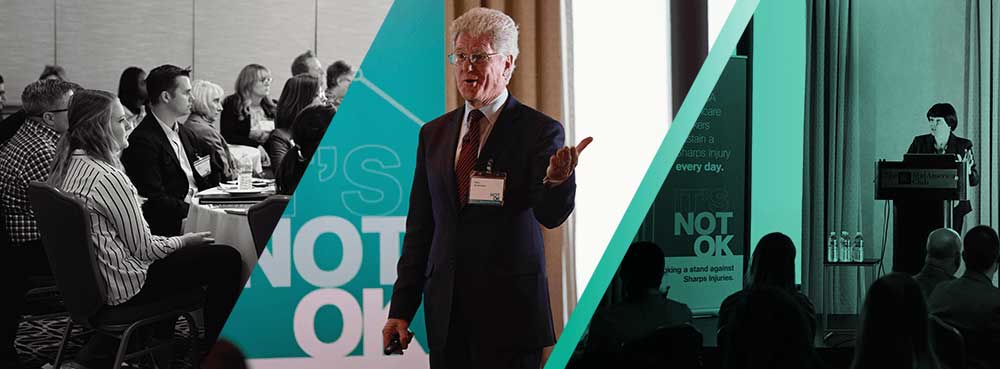Let's Squeak More

“The Squeaky wheel gets the grease,” and in the words of renowned microbiologist Terry Grimmond “when it comes to sharps injuries in the United States, we need to squeak more.”
In May 2014, I read a personal recount that brought home to me the reality of needlestick injuries and their impact on healthcare workers; it was a story of a nurse – someone who had dedicated her life to the care for others – who contracted HIV and Hepatitis C via a needlestick injury. In the months and years preceding this, sharps injuries had, in my mind, been merely a statistic – a large but impersonal number that could be recounted as an astonishing fact but held no personal reference.
Four years later I am privileged to hear Karen Daley, the nurse in the story, share her very personal journey from sharps injury victim to sharps injury prevention advocate. Karen’s story represents one of the 320,000 healthcare workers that get stuck each year, she is one of the minority that contracts a life threatening disease, she is a nurse, a carer, and someone whose life was irrevocably altered by an encounter with an overfilled sharps container.
"My injury didn't occur because I was careless or distracted or not paying attention to what I was doing. This injury and the life-threatening consequences I am now suffering should not have happened. And worst of all, this injury would not have happened if a safer sharps container had been in place in my work setting."
Karen Daley - former president of the American Nurses Association
The “statistic” suddenly became very real… behind this number was a human life.
“I don’t need to report it, it is likely a low risk stick”… this was the first thought that went through Karen’s mind when the infected sharp penetrated her hand. “but you should”… these were the words of a nurse who witnessed the incident. And now, 19 years later, Karen has endured the unimaginable journey of being diagnosed with HIV, being forced to end her nursing career, and having her life irrevocably altered by aggressive treatments that have rendered horrific side-effects to her body. She has stood in the oval office to witness President Clinton sign the ‘Needlestick Safety Prevention Act' and she has interviewed countless survivors to try and map a more supportive path for their experiences, she has advocated change and awareness… but all at the cost of incredible personal sacrifice.
Who cares for the carers?...
We need to look at the standards of safety engineered devices and sharps containers, but more than this, we need to somehow eliminate the stigmatism of needlestick injury reporting. Recounting the personal testimonies of the nurses she interviewed, Karen said the greatest challenge for victims was having someone who would support rather than judge; needlestick injuries are in some cases seen as a careless and negligent act… “why weren’t you more careful”. Or as immaterial… “it’s just a scratch, don’t worry about reporting it.”
This issue demands voices that are prepared to “squeak’… people who are willing to see a statistic not as a number, but as a person. Karen’s testimony asks that we look at two things, firstly how can we prevent sharps injury occurrence, and secondly... in the event of a needlestick injury, how can we support victims in seeking help and assuring them that it is going to be ok?
